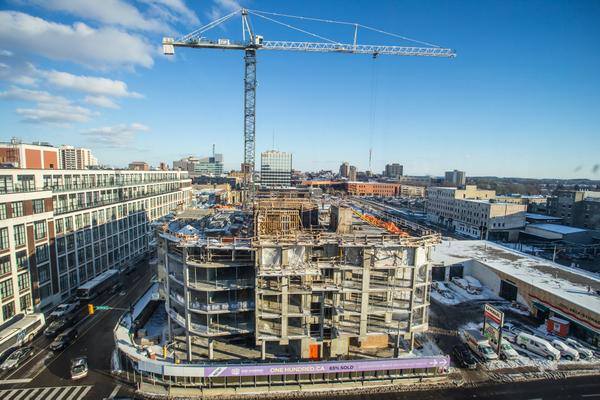Dan Herman
CONTRIBUTOR
Kitchener-Waterloo’s evolution as a centre for high-tech, post-secondary education and advanced manufacturing makes it easy to forget about the issues that still face the region. Amongst the most important – and of increasing prominence given rising house prices and the gentrification of the urban core – is the topic of affordable housing.
Despite the addition of over 2,000 new affordable and supportive housing units that have been brought online since 2000 — including recently announced projects to add 15-19 units by the local Working Centre — demand still far outweighs supply with over 3,500 families across the region still waiting.
The issue is far from a simple one, given the number of stakeholders involved and a recent forum hosted at the Region of Waterloo Museum by Member of Parliament Adam Vaughan (Trinity-Spadina), aimed at opening up a dialogue on the issue here in Kitchener-Waterloo. Vaughan, previously a city councillor in Toronto, has been witness to the extreme end of the issue with over 90,000 households in Toronto on waitlists for affordable and supportive housing. He says that this represents “centuries” of waiting, a sure sign that our current system isn’t working.
Locally, the demand for affordable and supportive housing has been growing, and will continue to do so as an aging population, unstable job market and continued pressure on middle-income wages leave many on a precarious financial footing.
Meeting this growing demand faces several challenges. Speaking at the forum, Waterloo mayor Dave Jaworsky noted that in Waterloo, land price increases have been driven primarily by intensification in the core and have crowded out non-profit oriented development. The same is happening in Kitchener where mayor Berry Vrbanovic observes that the need for housing must be complemented by strategies and dollars for mental health support and community building. Vrbanovic notes that such investments are proven to be effective and provide a positive return on investment.
Regional councillor Karen Redman notes that mitigating these market driven trends will require a collaborative effort between all levels of government, along with both private and non-profit partners. However, doing so will ultimately require an infusion of dollars. As it stands, just eight cents of every tax dollar we pay goes to municipalities, this despite the fact that over 60 per cent of the infrastructure we depend on is serviced locally. And as Vaughan noted, “you can’t build supportive housing with tax cuts.”
Rather what’s needed is a vision and a strategy for ensuring safe, stable and affordable housing for all members of our community. Developing a national housing strategy that provides cities with the dollars, and flexibility, to build local solutions will be key. As it stands, Canada is the only G8 country without a national housing strategy.
Strides have been made in developing culture, community and economy, but don’t get lost in the #kwawesome hashtags, we’ve got a few steps to go.




Leave a Reply